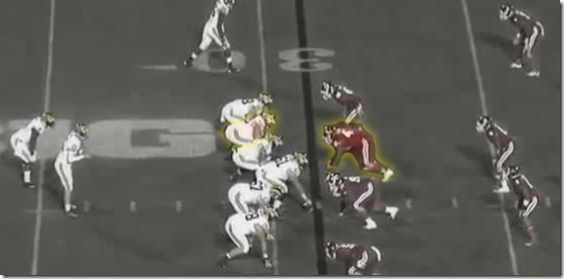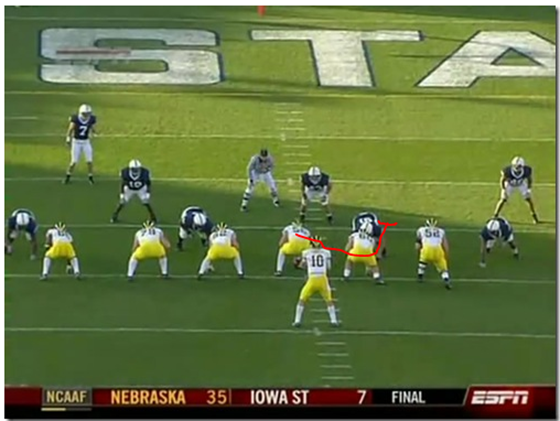2015 indiana

Feel ya, BVS [Patrick Barron]
The Sponsor:
It’s Nick Hopwood, our MGoFinancial Planner from Peak Wealth Management. Nick is also a Podcaster— if you haven’t listened to it before, his podcast Finding True Wealth. One of his episodes he shared how he put together his own financial plan for 2018. It's good to know if you choose a CFP where he puts his own money.
if you haven’t listened to it before, his podcast Finding True Wealth. One of his episodes he shared how he put together his own financial plan for 2018. It's good to know if you choose a CFP where he puts his own money.
Legal disclosure in tiny font: Calling Nick our official financial planner is not intended as financial advice; Nick is an advertiser who financially supports MGoBlog. MGoBlog is not responsible for any advice or other communication provided to an investor by any financial advisor, and makes no representations or warranties as to the suitability of any particular financial advisor and/or investment for a specific investor.
-------------------------------
The Question:
Games you remember watching in mortifying fear?
The Responses:
Ace: Before anyone protests, I suggested this because I have Cosmic Comeuppance For The Murderwolf Post, The Ulcer.
Seth: I wouldn't have suggested it because this game didn't for me. Even down 17-0 I figured Michigan would score the next 24 points.
Brian: I can no longer just assume those things. I also feel that ulcer games have to be wins? Is that crazy
Seth: There were a few minutes there when I wouldn't let Demorest's kid talk to me. That was it. The Michigan fans in that stadium were LOUD.
Ace: Yeah, I’ll be honest, I was pretty calm for this one.
Brian: Like the JT Was Short game wasn't an ulcer it was a crippling state of listlessness for months.
Ace: And yeah, ulcer games should be wins. The Horror is a disaster, Akron is an ulcer. Speaking of which, that game.
Seth: The Akron game was on Rosh Hashanah, and the second my brother and I left the stadium everything went alright. Sorry about doing that to everyone but we fixed it.
Brian: Well then how about most Northwestern games
Ace: Man this is gonna be a Lloyd-y list.
The Mathlete: The Halloween Minnesota game
Brian: You're supposed to win, Pat Fitzgerald's head keeps getting bigger, you're not even sure you want credit for the W afterwards. Mathlete, that is a superior choice. The Minnesota game featured Mitch Leidner getting extraordinarily lucky about five times and came down to a goal line stand after Minnesota frittered away two downs from the one.
David: Minnesota 2004 is another one for me. I kept thinking "We can't lose to Minnesota." But then we did...the next year.
Seth: UConn was an ulcer.
Ace: Thank you Desmond Morgan for keeping the damage limited to that. I’m not sure some of these Hoke-era wins count because they didn’t feel very inevitable, though. Like, at all.
Brian: I feel like there are two different categories here. One are games where you are dominating statistically but the scoreboard disagrees, and then there are games where the team is playing like inexplicable ass.
Seth: YES.
Brian: Or, in many cases, fairly explicable ass.
[After THE JUMP: Spleen]
Once upon a time, there was a little girl with hair wings the color of goldish yellow, kind of like corn, or maize, or maybe the 14th most populous city in Texas if that makes sense. (She also had a phase where she dyed it neon. A lot of people bitched about what color this was, actually).
Anyway, one day she went for a walk in the forest. Pretty soon, she came upon the house where lived three bears. She knocked and, when no one answered, she walked right in.
Earlier this week I went over what a reach block is. There's actually a play where they're trying to reach block all three relevant linemen. It's called a zone stretch, also known as outside zone. And no, it doesn't actually rely on everyone getting reached; in fact all sorts of things are expected to go wrong, with guys getting help and offensive players coached to react to defensive reactions.
Those links cover what the offense does, but how should the defense play it? Indiana ran a lot of zone stretch against Michigan in 2015 and on one in particular I thought we got a nice example of the actions and reactions that go into these plays.
Zone blocking asks the OL to get the best block they can based on what the defense does, and as you might have guessed a reach block is the best block you can pull off. On a stretch play the OL will ID the defender they need to get playside of by how the D aligns, and the way they play the block is determined by how the guy getting block reacts. The RB then picks whatever hole materializes.
There are three different reach attempts going on here:
- The LT (Jason Spriggs) will reach/cut Godin (top)
- The LG (Jacob Bailey) will try to reach Willie Henry (middle) with a minor assist from the C (Jake Reed) as he releases.
- The RG (Dan Feeney) and RT will try to scoop Chris Wormley.
A scoop is a combination block where the OL lined up outside blocks the defensive player until the guy doing the reaching can get in position. Once they've got another guy around, the outside man releases to block someone else. Teams that run a lot of zone will get good at combo-ing with each other, and it's rare that any reach block is purely the work of one man. Even in our last example Braden lent Mason Cole an arm.
[After THE JUMP, too soft, too hard, and just right]
This is a new series I've begun to serve as an ad hoc glossary of specific football concepts/terminology that get thrown around in our articles. The plan is to discuss as they come up and then (probably forget to) link them when we're talking about this stuff down the road.
REACH BLOCK DEFINED
When an offensive lineman blocks a defensive player who's lined up playside of him. For example on this play Mason Cole is going to block this guy:
…on a play going to the right of him. In other words this play is going to the defender's left, and it's Mason Cole's job is to be in the way of that defender going left.
HOW DO YOU DO THAT?
There are lots of O-line technique videos out there but here's the simplest:
The reaching blocker takes a short (that's key) step at an angle toward the defender's opposite shoulder. That puts him in a stance sort of like that of an Olympic sprinter, so his next step can launch him across that defender and get your helmet across the defender's torso. Lock in that victory by putting the inside arm into the defender's outside number, and pivot around to seal. The key is quick feet and a wide stance to not get off-balance—remember the defender is also fighting.
IS THAT HARD?
Yuh huh. The lineman has a fraction of a second between when the ball is snapped and the defense starts to read the blocking to get around that guy, get leverage, and seal the dude being blocked before dude can put a stop to this. It is the hardest of blocks.
Coaches emphasize different talking points but the basics are a short first step toward the outside shoulder, get your arms into him and your head across to seal, all the while keeping your feet apart so don't get knocked off.
Back when (IU OL coach) Greg Frey was at Michigan under Rich Rod, Michigan would try this a handful of times a game, and Molk was better at this than just about anyone I've watched closely. In fact Brian had a Picture Pages in 2008 to show Molk getting a guy lined up outside the guard.
Michigan tried a bunch in 2007, when they were a zone stretch team. This had varying results: Jake Long and (former tight end) Adam Kraus could pull it off occasionally; Justin Boren, Jeremy Ciulla, Alex Mitchell and Reuben Riley were comically bad at it. Against FBS competition it takes a very agile player.
[After THE JUMP: running it, and defending it]
![image_thumb[37] image_thumb[37]](http://mgoblog.com/sites/mgoblog.com/files/image_thumb37_thumb_0.png)
![image_thumb[33] image_thumb[33]](http://mgoblog.com/sites/mgoblog.com/files/image_thumb33_thumb_1.png)


67